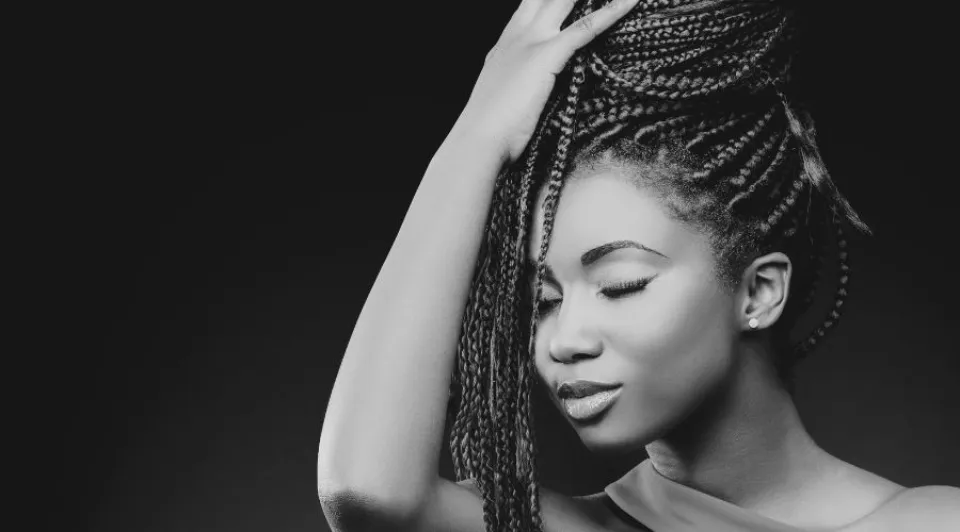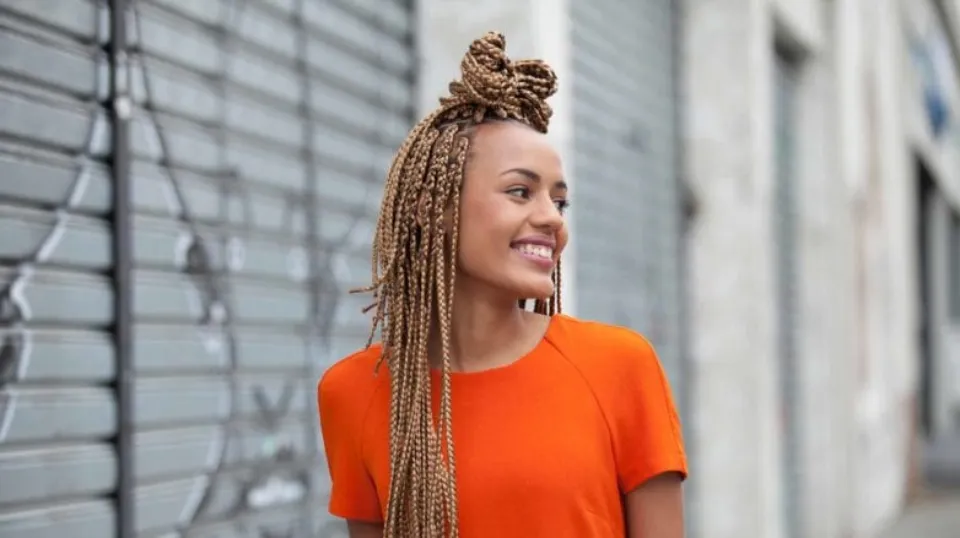Currently, Black women are sporting box braids as a protective hairstyle. If you’ve tried out this hairstyle before and wondered, “Where did box braids originate?” then you’re in the right place because we have all the answers.
This hair braiding method came from the chin-length bob braids, which used to be worn by women of the Nile valley.
More information about box braids‘ history is provided in the following paragraphs.
Where Did Box Braids Originate?
Box braids specifically have their origin in South Africa, dating back to 3500 B.C. The box braid hairstyle as we know it today may be dated back to ancient Egypt at least 3,000 years ago.
Egyptian women allegedly used extensions in this tight, braided style to hide greying hair and give the appearance of longer hair.
During that time, human hair, felt, or even wool was occasionally wefted into fiber skull caps so that they could be worn again as traditional clothing for ceremonies. They adorned their box braids with gems, beads, cowrie shells, and other priceless items.

Important facets of a woman’s identity were revealed by braid designs or patterns. The type of box braids a woman was sporting hinted at their propensity for procreation as well as their wealth, high priesthood, and other titles.
Box braids were expensive in terms of money, time, and installation. A woman was regarded as wealthy if she could afford to spend hours sitting still while having box braids put in.
It would take four to eight hours to complete the box braiding process.
Who Made Box Braids?
This style first originated in African tribes back in 3500 B.C. Many believed this hair braided style was only worn by women who had enough free hours adorning the plaits.
Earlier women would disguise their readiness for marriage by adorning their braids with jewels, vibrant beads, and cowrie shells, which would also indicate a woman’s age, economic status, etc.
Related Post: Are Box Braids Cultural Appropriation?
How Do Box Braids Look Like?
Box braids are not different from standard three plaits braids, but this braiding method is more defined compared to knotless braids.
Your hair must first be divided into exact square shapes all over your scalp.
The plaits can then be made with either Kanekalon hair or human hair. It is made up of fine cornrow-style braids that, from a distance, may look like natural hair. These braids, though, give the impression that they are ropes hanging from your head.
Related Post:
Can Anyone Do Box Braids?
Unfortunately, not everyone can go for box braids. For this hairstyle, any hair texture is acceptable, but you must have hair that is at least 1.5 inches long. Again, box braids are not an option if you have scalp problems, thin or recently dyed hair, or fragile hair.
On the other hand, developing this style needs both patience and accuracy. Therefore, if you run out of time, it might be difficult for you to finish the entire process.
Read More: Do Box Braids Damage Hair?
Conclusion: Where Did Box Braids Originate
By far, box braids are one of the most adaptable braided hairstyles for Black women. Everyone wants to wear braids because they are still fashionable right now.
Now that you know the answer to “where did box braids originate,” you can try out this look yourself.
Your box braids don’t have to be one particular style; you can get creative with them. They enhance your appearance and are not only attractive.
Read More: How to Do Bohemian Box Braids?
FAQs
What Braids Are Not Cultural Appropriation?
Not all braids are cultural appropriation. You can wear french braids, three-strand braids, and fishtail braids, which do not hold cultural significance.
Are Box Braids Cultural Appropriation?
Undoubtedly, if a white person wears box braids, they will be accused of appropriating cultural practices.
Where Did Braids Originate From?
The Himba people of Namibia invented braiding in Africa.




